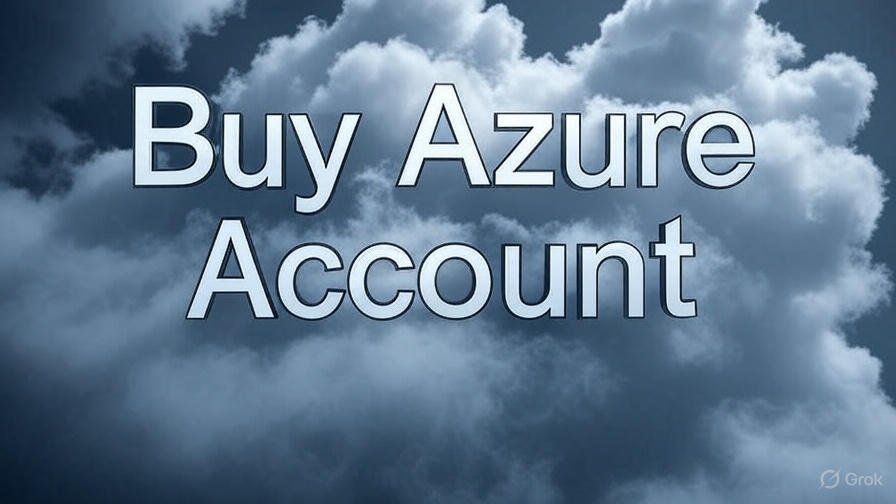In 2025, Microsoft Azure has faced a series of high-profile security incidents, highlighting the vulnerabilities in cloud environments and the critical need for secure account management practices. From the active exploitation of SharePoint vulnerabilities in July 2025 2 to the Commvault Azure breach via a zero-day flaw in May 12 , these events have exposed risks in on-premises and hybrid setups, potentially allowing unauthorized access to subscriptions and resources. As businesses increasingly seek to buy Azure accounts—often through legitimate ownership transfers for mergers, acquisitions, or efficiency gains—ensuring these processes are handled securely is paramount. This news article, drawing from Microsoft’s latest documentation and recent updates, provides an in-depth guide to transferring Azure account ownership safely, while addressing compliance and security in light of ongoing threats.Microsoft’s Secure Future Initiative, updated in April 2025, underscores the company’s commitment to enhancing cloud security postures. 9 With the cloud market projected to surpass $1.5 trillion by 2030, Azure’s role in enterprise infrastructure is undeniable. However, incidents like the critical 10/10 vulnerability confirmed in May 2025 8 remind us that account transfers, if mishandled, can amplify risks. While Microsoft does not officially support direct purchases of accounts, ownership transfers serve as a secure alternative for acquiring established subscriptions, provided they follow official protocols.
The Surge in Azure Account Transfers Amid Security Concerns
The demand for buying Azure accounts via transfers has risen sharply in 2025, driven by business consolidations and the need for rapid resource scaling. Recent updates, such as the February 2025 enhancements to transferring subscriptions across Microsoft Entra directories 16 , have streamlined the process but introduced new security considerations, including role-based access control (RBAC) resets. Community discussions on platforms like X highlight real-world challenges, such as account admin login issues during transfers due to tenant inactivity. 33 For additional insights, explore cloud security trends at CSO Online.
These transfers are essential for scenarios like enterprise enrollments, where entire accounts can be moved between agreements. 19 However, with reports of over 1,360 vulnerabilities in Microsoft products last year escalating into 2025 0 , buyers must prioritize security to avoid breaches during transitions.
Prerequisites for Secure Azure Ownership Transfers
Before proceeding to buy an Azure account through transfer, verify eligibility and prepare adequately. As per Microsoft’s 2025 guidelines, only certain subscription types are transferable, including Pay-As-You-Go and Azure Plan. 31 Key prerequisites include:
- Administrative Access: The initiator must be a billing account administrator, and the recipient a billing administrator in the target account.
- Tenant Validation: Transfers to B2B or B2C tenants are unsupported; confirm compatibility to avoid RBAC disruptions.
- Resource Backup: Safeguard data and configurations pre-transfer to mitigate downtime risks.
- Compliance Review: Assess regulatory impacts, such as data sovereignty under GDPR or HIPAA.
Recent cost management updates in May 2025 emphasize optimizing billing during transfers.
Detailed Step-by-Step Guide to Transferring Ownership
Leveraging the latest Microsoft documentation updated in July 2025 31 , here’s a comprehensive guide to safely transfer billing ownership:
- Access the Azure Portal: Sign in at portal.azure.com as the billing administrator.
- Select Subscription: Navigate to “Subscriptions,” choose the target, and click “Transfer billing ownership.”
- Input Recipient Details: Enter the destination billing administrator’s email.
- Choose Tenant Option: Select “Move subscription tenant” if changing directories, acknowledging RBAC reset.
- Submit Request: Send the transfer; it’s valid for 15 days.
- Recipient Approval: The new owner reviews via email, selects payment if needed, and accepts.
- Post-Transfer Configuration: Reassign roles, update credentials, and verify access.
For CSP partners, additional steps apply, as updated in June 2025.
| Type | RBAC Impact | Security Notes |
|---|---|---|
| Same Tenant | Preserved | Minimal disruption; ideal for internal shifts. |
| Different Tenant | Reset | Requires immediate role reassignment to prevent access gaps. |
| Enterprise Enrollment | Account-Wide Move | Coordinate with Microsoft support for compliance. |
Security Best Practices for Azure Transfers in 2025
Given incidents like the CVE-2025-53786 in Hybrid Exchange 6 , implement robust security measures:
- MFA Enforcement: Mandate multi-factor authentication for all involved accounts.
- Vulnerability Scanning: Use Azure Security Center post-transfer.
- Secure Protocols: Enforce HTTPS for storage and connections.
- Audit Guest Access: Prevent privilege escalations noted in recent breaches.
Microsoft’s incident management strategy ensures rapid threat response. 3 Learn more about cloud security best practices at SecurityWeek.
Compliance and Regulatory Considerations
Transfers must align with terms, including no credit carryover for certain plans. 31 Key focuses:
- Data Laws: Verify regional compliance to avoid violations.
- Audit Logging: Retain transfer records using Azure tools.
- Partner Transitions: Handle CSP migrations carefully.
Common Pitfalls and Real-World Solutions
User experiences on X reveal issues like nuked accounts leading to access loss. 35 Avoid by:
- Coordinating timelines to prevent expiration.
- Promptly reassigning IAM roles.
- Consulting forums for troubleshooting.
FAQs on Buying Azure Accounts via Transfers
What happens to credits during transfer?
Monthly credits do not transfer; they reset based on the new account.
Can I transfer to another partner?
Yes, for CSP subscriptions, following updated guidelines.
How to handle post-transfer access denials?
Re-add owners via Azure IAM; contact support if needed.
Conclusion: Securing Your Azure Future
As Azure announcements exceed 9,000 in 2025, secure ownership transfers are key to leveraging this growth safely. By adhering to these guidelines amid rising threats, businesses can confidently buy Azure accounts through transfers, bolstering resilience. For personalized advice, consult Microsoft’s support or the Azure portal. Stay vigilant as cloud security evolves.

